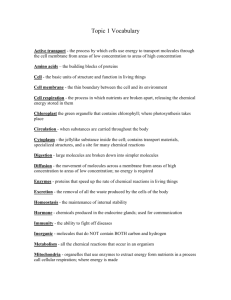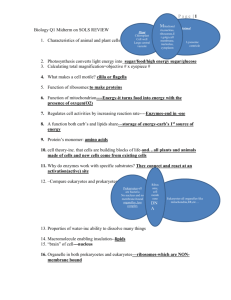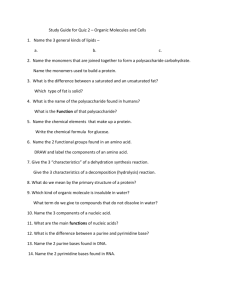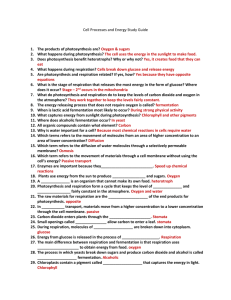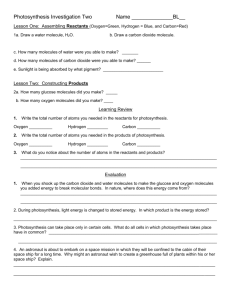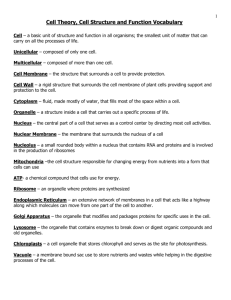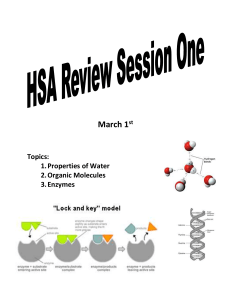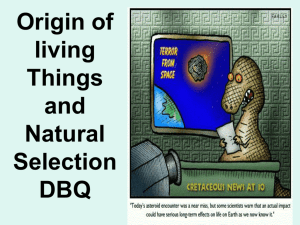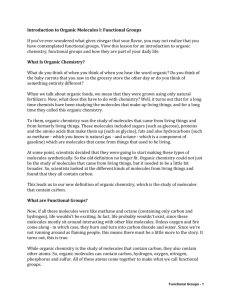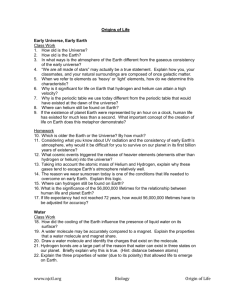Unit 2 Review worksheet
advertisement
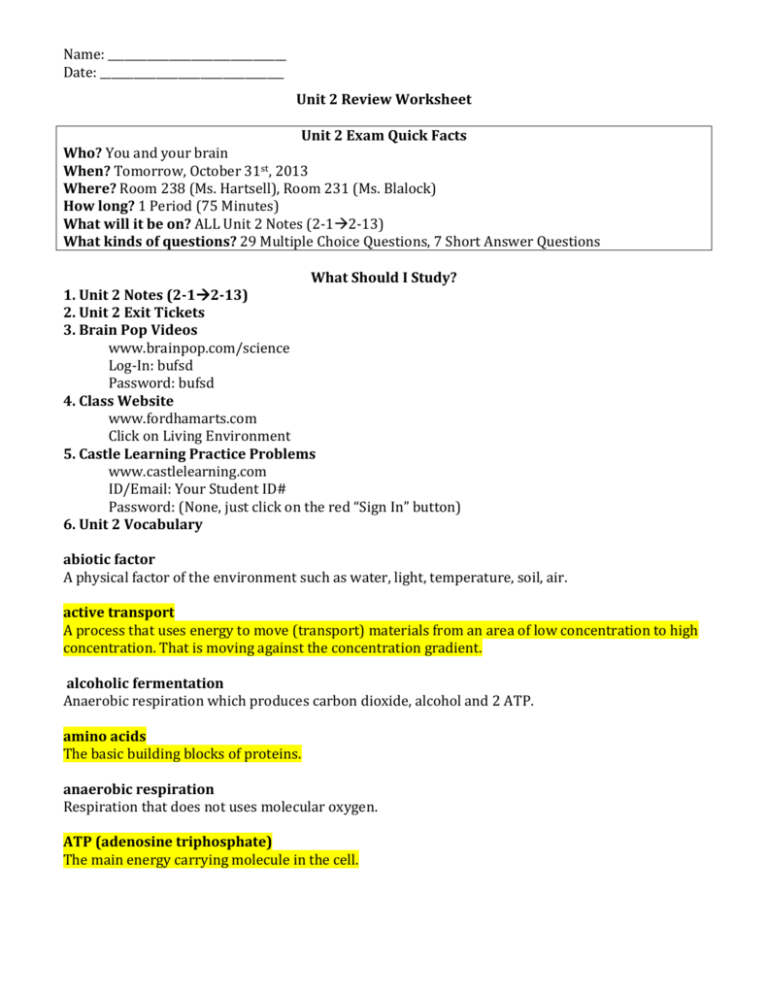
Name: ________________________________ Date: _________________________________ Unit 2 Review Worksheet Unit 2 Exam Quick Facts Who? You and your brain When? Tomorrow, October 31st, 2013 Where? Room 238 (Ms. Hartsell), Room 231 (Ms. Blalock) How long? 1 Period (75 Minutes) What will it be on? ALL Unit 2 Notes (2-12-13) What kinds of questions? 29 Multiple Choice Questions, 7 Short Answer Questions What Should I Study? 1. Unit 2 Notes (2-12-13) 2. Unit 2 Exit Tickets 3. Brain Pop Videos www.brainpop.com/science Log-In: bufsd Password: bufsd 4. Class Website www.fordhamarts.com Click on Living Environment 5. Castle Learning Practice Problems www.castlelearning.com ID/Email: Your Student ID# Password: (None, just click on the red “Sign In” button) 6. Unit 2 Vocabulary abiotic factor A physical factor of the environment such as water, light, temperature, soil, air. active transport A process that uses energy to move (transport) materials from an area of low concentration to high concentration. That is moving against the concentration gradient. alcoholic fermentation Anaerobic respiration which produces carbon dioxide, alcohol and 2 ATP. amino acids The basic building blocks of proteins. anaerobic respiration Respiration that does not uses molecular oxygen. ATP (adenosine triphosphate) The main energy carrying molecule in the cell. Name: ________________________________ Date: _________________________________ biotic factors Living things and their effect on each other. carbohydrate An organic nutrient made of carbon, hydrogen and oxygen and having a carbon to hydrogen ratio of 2:1. cell The basic unit of structure and function of all living things. cell membrane The semi-permeable outer boundary of the cell, made of lipids and protein. cell wall The rigid porous structure that surrounds the cells of plants and some microorganisms. cellular respiration The enzyme-controlled process in which energy is released from food and converted into a form that the cell can use. chlorophyll The green pigment found in plants and algae that is essential for photosynthesis. chloroplast A chlorophyll-containing plastid that is the site of photosynthesis. decomposers Organisms of decay which convert organic compounds into inorganic compounds. dialysis tubing (plastic bag from the Starch/Iodine Lab) A semi-permeable tubing used to demonstrate the properties of the cell membrane. diffusion The movement of molecules from an area of high concentration to an area of low concentration without the use of energy. environment All the living and nonliving things that surround a living thing. excretion The removal of metabolic wastes. heterotroph An organism that cannot make its own food and therefore must ingest (eat) organic nutrients. inorganic Name: ________________________________ Date: _________________________________ A compound that does not contain both carbon and hydrogen. metabolic wastes Waste material produced as a result of metabolic activities, including carbon dioxide, water, nitrogenous wastes and salts. mitochondria An oval-shaped organelle which is the site of cellular respiration. molecule Two or more atoms chemically combined. nucleus In the cell, a large membrane enclosed organelle that contains the chromosomes. nutrients Food; molecules used by the cell for its metabolic activities including energy, growth, repair and regulation. nutrition The taking in and processing of food to make it usable. organelle A structure found in the cell that performs a specific function. organic molecules Molecules that contain both carbon and hydrogen. organism An individual living thing. photosynthesis The process by which green plants (autotrophs) convert light energy to chemical-bond energy stored in organic nutrients. protein An organic compound made of amino acids. respiration The process which releases chemical bond energy from organic nutrients (food). ribosome The organelle that is the site of protein synthesis in the cell. starch A carbohydrate composed of many glucose molecules. Name: ________________________________ Date: _________________________________ synthesis A chemical process in which small molecules are joined make large molecules. vacuoles Bubble-like storage areas for food and water in the cell, enclosed by a membrane.



